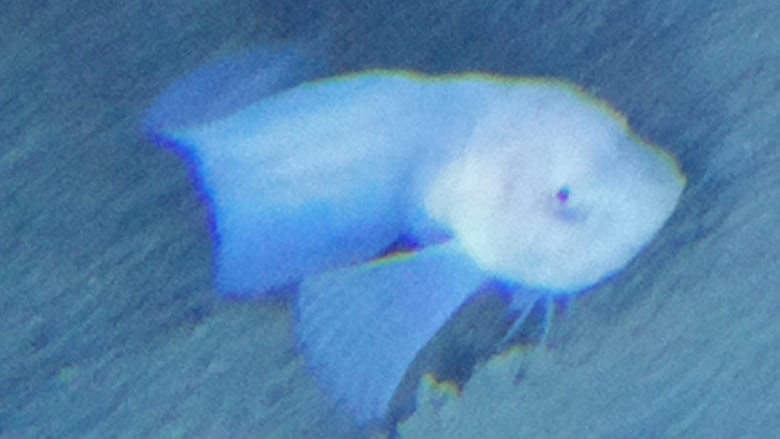New fish species found in the Pacific depths turn to jelly when brought to the surface
'It just can't share the same space with me without disappearing,' says researcher Thomas Linley

For the time being, they're simply known as the pink, blue and purple.
Researchers from Newcastle University have recently discovered three new species of snailfish in the deep Atacama Trench, off the coast of Peru.
The fish are small and transparent. They come from one of the deepest parts of the Pacific Ocean — and when brought to the surface, they turn into jelly-like blobs and disappear.
Thomas Linley, a research associate at Newcastle University, spoke to As It Happens host Carol Off about the discovery.
Here is part of their conversation.
Atacama Trench, which is off the coast of Peru, is where you found these creatures. How deep is that?
Its deepest point is Richard's Deep and it's just over 8,000 metres. It's also a very large trench. It sort of runs the length of the west coast of South America.

Given what's going on in the world, both land and sea, it sounds like a pretty good place to hang out and live.
In adapting to go deeper than any other type of fish, they've sort of got the place to themselves. They've escaped their predators and their competition.
There's loads of food down there for them to eat. You can see the arthropods in the videos and that's actually what they are feeding on down there. So, I think once you commit to a trench and you adapt to go deeper, it's an alright life.
Descubren tres nuevas especies de peces en las profundidades del océano Pacífico. <a href="https://t.co/lnKw339Yb1">https://t.co/lnKw339Yb1</a> Vía <a href="https://twitter.com/UniofNewcastle?ref_src=twsrc%5Etfw">@UniofNewcastle</a> <a href="https://t.co/80VMM6CtBr">pic.twitter.com/80VMM6CtBr</a>
—@TapasDeCienciaWhat happens when you bring these fish to the surface?
In adapting to live so deep, it's really sort of at the bio-chemical level. The molecules that make them up are meant to be held together at that extreme pressure.
So when we bring them up to the surface, the drop in pressure and the warmer temperatures in the surface waters means that the body actually degrades very, very quickly.
We have to work very quickly, either in a cold room or with chilled sea water, just to stop the animal from melting and disappearing while we are trying to preserve it and trying to record it.
It makes me realize how different the world they live in is to the one I am — that it just can't share the same space with me without disappearing.
But it also drives home how much I enjoy taking video of these animal in situ. I think that's how to do them justice. That's how to think of these animals.

They're so deep. How did you get to even find them?
We have machines that do it on our behalf, really. Lowering something down on a cable to these kind of depths would be a huge undertaking. It's certainly possible, but you need a very, very large vessel. You're going so deep that the physics gets a bit crazy.
Our equipment, we actually drop from the surface. We allow it to free fall. We use a piece of bait to bring animals to us rather than going looking for them. And then when it's done, it will drop its ballast and come back up to the surface where we can retrieve it.
It's really efficient. It means we can be turning these vehicles over and always have one on the bottom recording while we recharge and download the other one.

Here you have three new species of these fish and you're calling them pink, blue and purple. Is that going to remain their names?
I really hope not. It doesn't do them justice. But we weren't expecting to find so many.
We had a suspicion there was one in the trench. We'd got some photos in a previous expedition, but only a few. So we were really going back hoping to find that animal again, and we did. That's the one we are calling blue.
But then, two others came along, and in the frenzy of trying to make ourselves understood in the lab, we gave them really quick placeholder names. I hope they don't stick, but it's still the easiest way to talk about them.
Written by Sarah Jackson and John McGill. Produced by Sarah Jackson. Q&A has been edited for length and clarity.